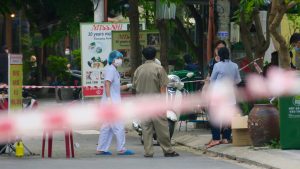In comparison to other countries, Vietnam’s COVID-19 figures – 35 deaths and 3,571 cases – remain low; however, a new outbreak is likely to delay the reopening of the country’s borders, slow the tourism industry’s recovery, and depress the economy.
Vietnam has seen a new outbreak of COVID-19 sweep across 25 of its provinces since April 27, bringing 580 new infections to a country that had otherwise brought the virus mostly under control since the beginning of the pandemic.
Overseas travelers returning to Vietnam and Chinese migrants crossing the borders illegally have been blamed for this latest resurgence of the virus. This week, at least three people have been arrested for smuggling illegal entrants from China into Vietnam, prompting the national authorities to tighten their borders with China, Cambodia, and Laos even further. At present, Vietnam is only permitting high-skilled expert workers, people with diplomatic status, and others traveling with official passports to enter the country.
Presently, travelers arriving in Vietnam need to quarantine for 21 days instead of 14 as authorities look to enforce stricter measures to contain the latest spread in the coming weeks. Local authorities are also implementing stricter penalties for those who don’t obey the now-familiar mask-wearing, social distancing, and proper hygiene measures. Some locals have already fallen afoul of the authorities by allegedly spreading fake news or rumors over social media. One local man in Hanoi was fined 12.5 million Vietnamese dong ($542.30) earlier this week for posting on his Facebook account that the capital was going into lockdown.
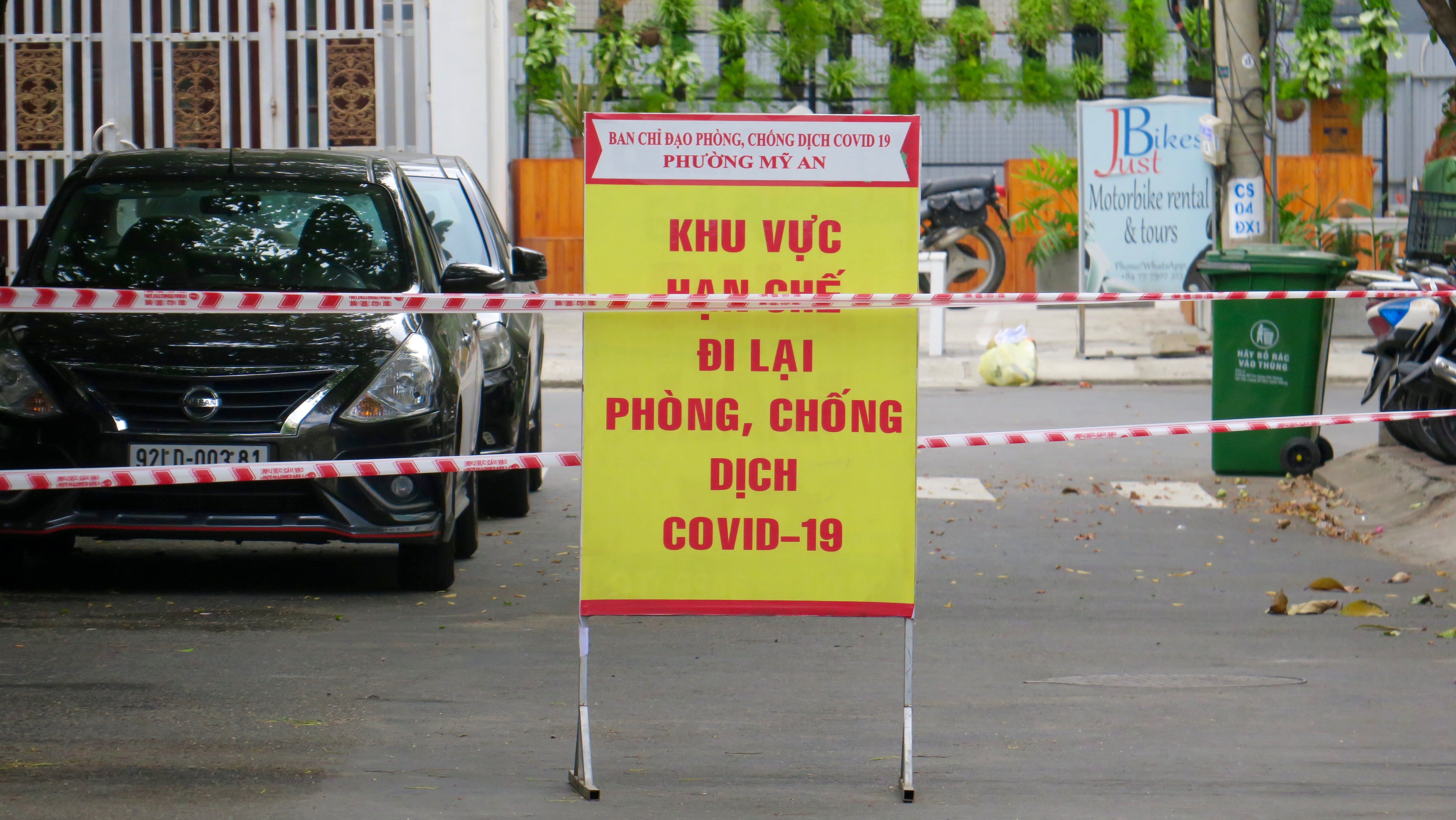
A street in Da Nang is blocked off in a suspected virus hotspot. Photo by Hugh Bohane.
At this stage, non-essential services such as massage parlors and karaoke clubs are mostly closed in Hanoi and Da Nang. People are still able to access essential services and order takeaway food and are being encouraged to stay at home to curb the spread.
The Diplomat spoke to several locals about how this new wave of COVID-19 is impacting their livelihoods.
Tang My Khanh is 27 years old and works in the tourism industry in Da Nang.
“Sadly, this is another new wave of COVID-19 to hit Da Nang, my friends and I are working in the same industry and we have all suffered a lot due to the lockdowns and the shutting down of international flights,” she said. “Our salary has been cut by 80 percent from last year and the situation is not easy for us at all.”
Nguyen Thi My Van is a 64-year-old cleaner who works in the cafeteria of a secondary school in Da Nang.
“Immediately after these new cases in Da Nang the government ordered students to stay at home, which means I may not receive any money for the next two months, most of my income depends on students going to school, so I will just stay at home and I’m afraid to go outside due to my age,” she said.
Before these recent coronavirus cases, Vietnam’s trade growth reached a 10-year high of $207 billion in the first quarter of 2021, an increase of nearly 30 percent compared to the same period last year. Comparing the second economic quarter of last year to the projected results from the same quarter of 2021, economists are predicting a less dramatic improvement. There will also be some fresh challenges ahead in terms of the overall recovery effort, as this latest wave has arrived unexpectedly and put Vietnam in a position it was otherwise hoping to avoid.
Anh Duong, a director at the Central Institute for Economic Management (CIEM), a government think tank based in Hanoi, spoke to The Diplomat about the impact this current outbreak will have on the economy.
“Given this new outbreak and the severity of the Indian variant of the virus the likelihood of international tourism opening again anytime soon has since been dampened for now,” said Duong.
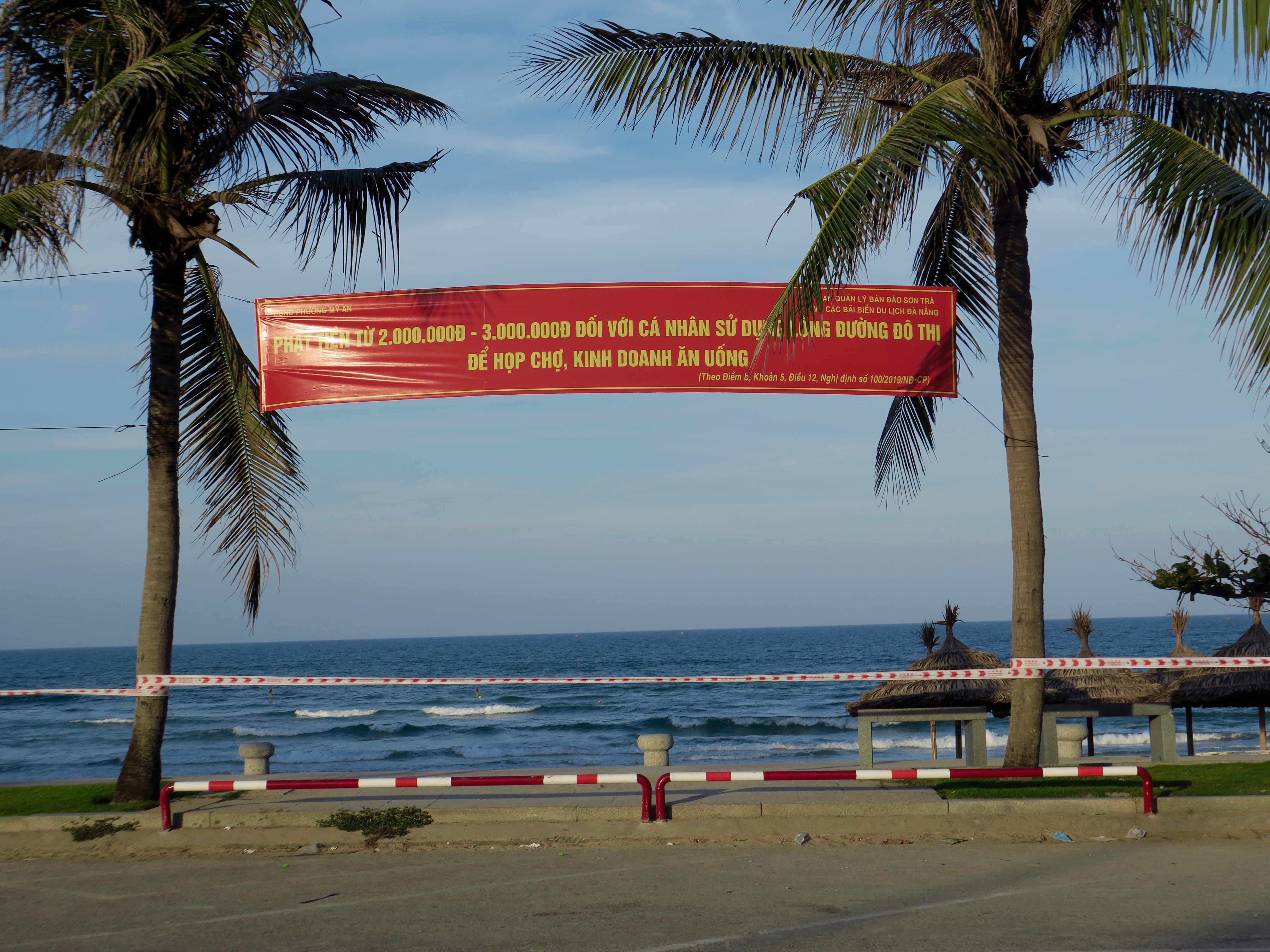
My Khe beach in Da Nang is roped off. Photo by Hugh Bohane.
Based on previous coronavirus waves, Vietnam’s tourism industry has put in place adaptive strategies to bolster the domestic tourism sector. Due to Vietnam’s borders being shut, domestic tourists have had no other choice but to travel to provinces inside Vietnam. Consequently, national tourism companies have lowered their prices for hotels and other services making higher-end packages more affordable and therefore more attractive to local travelers.
“In terms of overseas investments, the authorities in Vietnam are doing a good job of communicating with foreign investors and so we might manage to get some more key investors coming into Vietnam,” Duong said.
The ongoing tensions between some Western governments and China makes Vietnam an attractive option for the relocation of international manufacturers seeking to diversify their operations. Foxconn is just one of the latest major manufacturers to move some of its Apple production line to Vietnam amidst the fallout from the recent Sino-U.S. trade war.
Ongoing improvements are being made to Vietnam’s infrastructure and human resources to make room for future foreign investments. A recent report from CIEM highlighted the need for Vietnam to develop a long-term economic recovery plan for when the pandemic subsides. Some of the solutions presented in the 103-page report outline a roadmap for further institutional reforms, better opportunities for the private sector, adaptation to new e-business models, and greater integration of international economic cooperation.
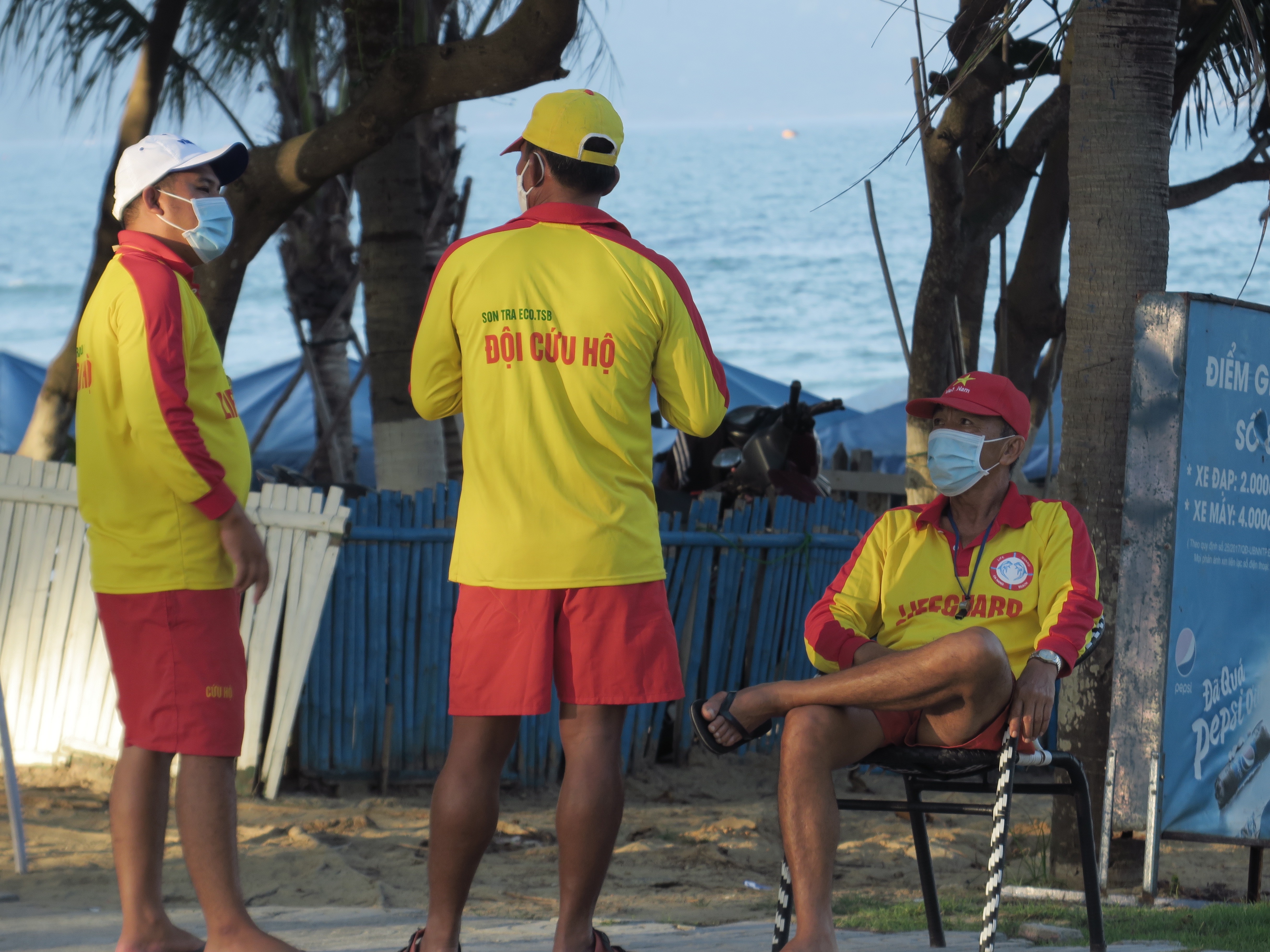
Lifeguards in masks at My Khe beach, Danang. Photo by Hugh Bohane.
In the future, an inevitable key issue for Vietnam’s economic recovery will be the need to build on its production base and its ability to increase cooperation between local companies and foreign investors. While the country has been lauded for its handling of the virus, it is still somewhat behind in terms of its vaccine roll-out. On a more positive note, Vietnam has so far largely managed to maintain social stability and the Vietnamese business community is still, on the whole, supportive of the government’s current policies for combating the virus. Vietnam has also seen some success in maintaining macroeconomic stability with foreign investors, who still view the country as an attractive place to invest. Vietnam’s trade surplus and inflation rate have remained relatively steady.
The CIEM report assumed that COVID-19 would (arguably) be brought under control within Vietnam by the end of 2021. Beyond that, a lot rides on how well the country can ensure its economic reforms and economic stimulus will stay in harmony with each other. Moreover, Vietnam will need to relax its monetary and fiscal policies by next year, assuming that the virus is brought under control. Economic reforms are needed to reduce the cost of macroeconomic stimulus and ensure the reforms that have been put in place over the last few years will continue to remain in place.
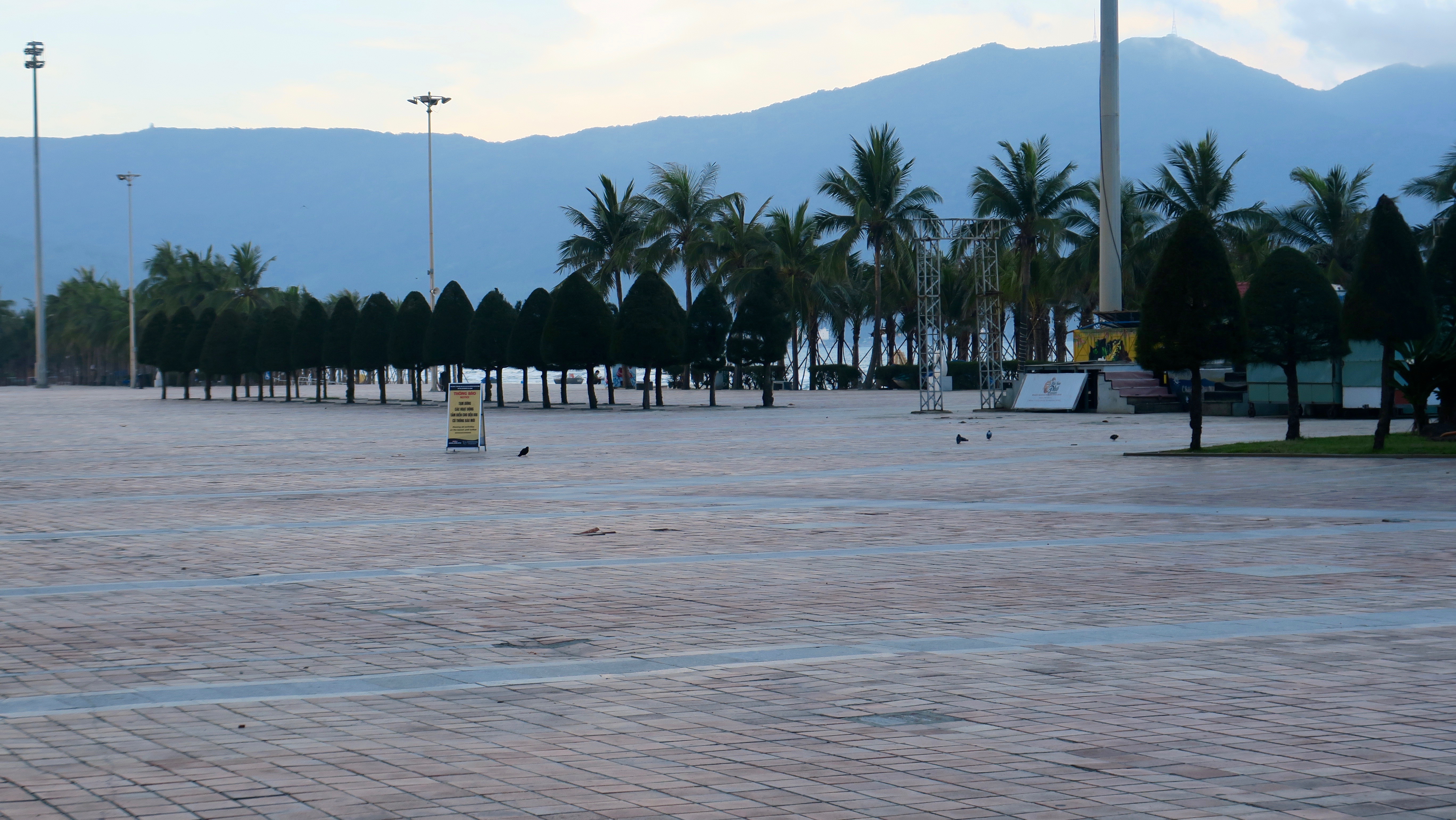
The My Khe beach promenade in Da Nang has emptied. Photo by Hugh Bohane.













